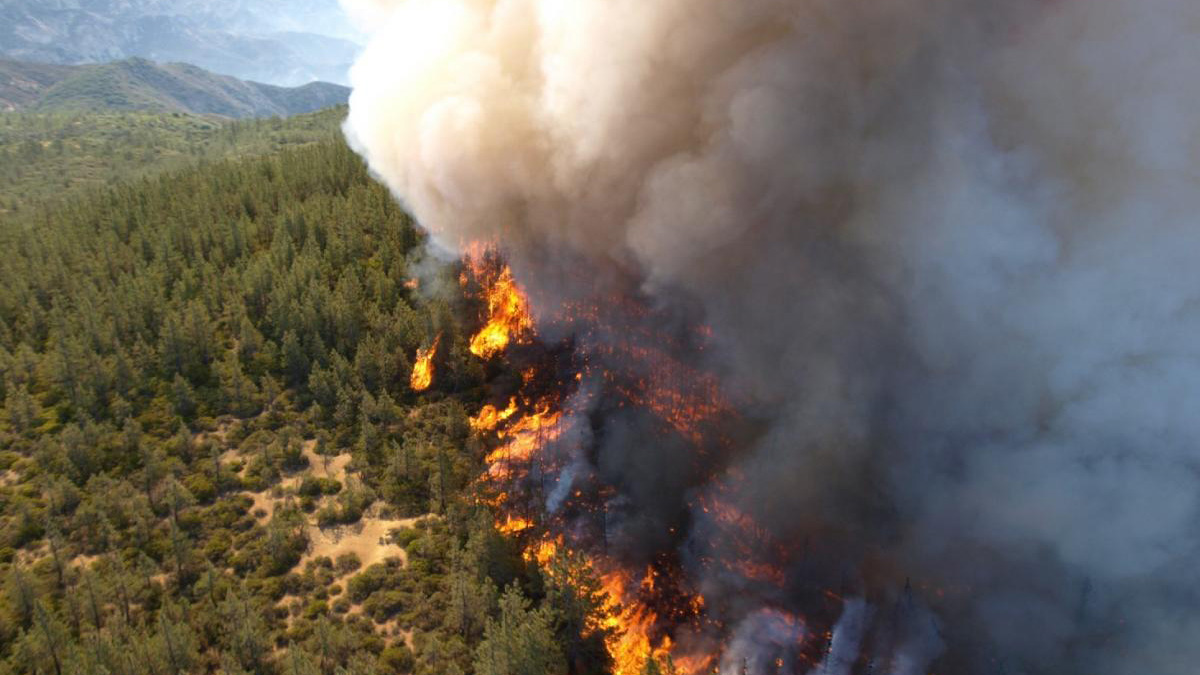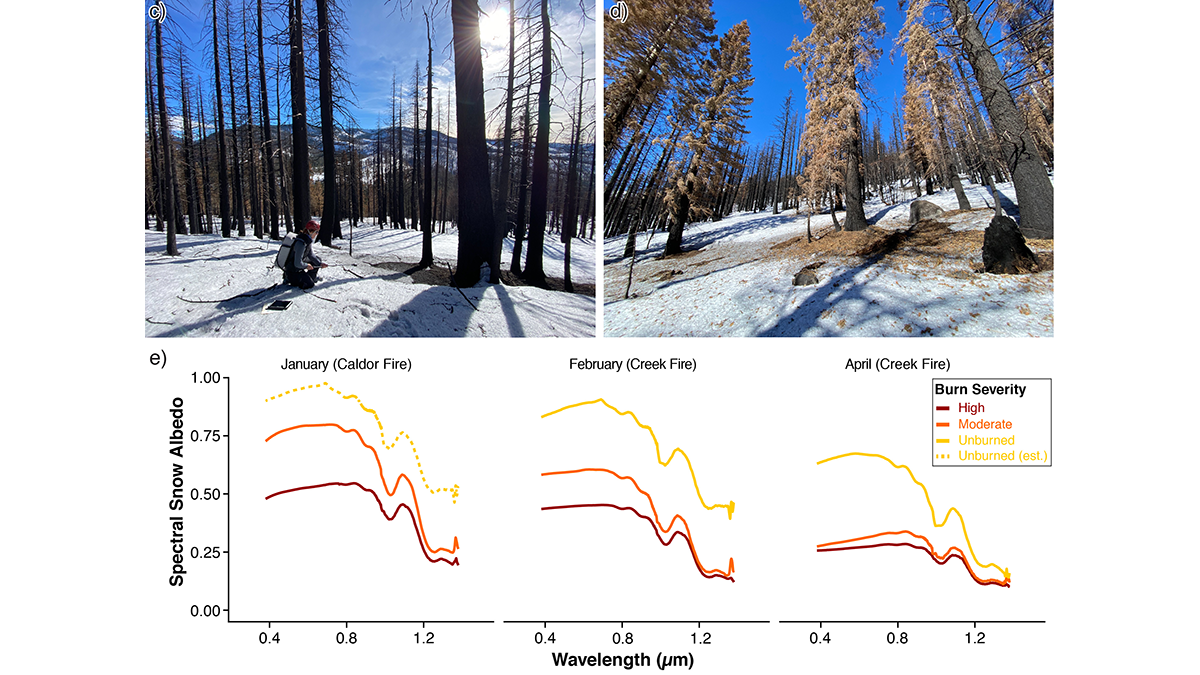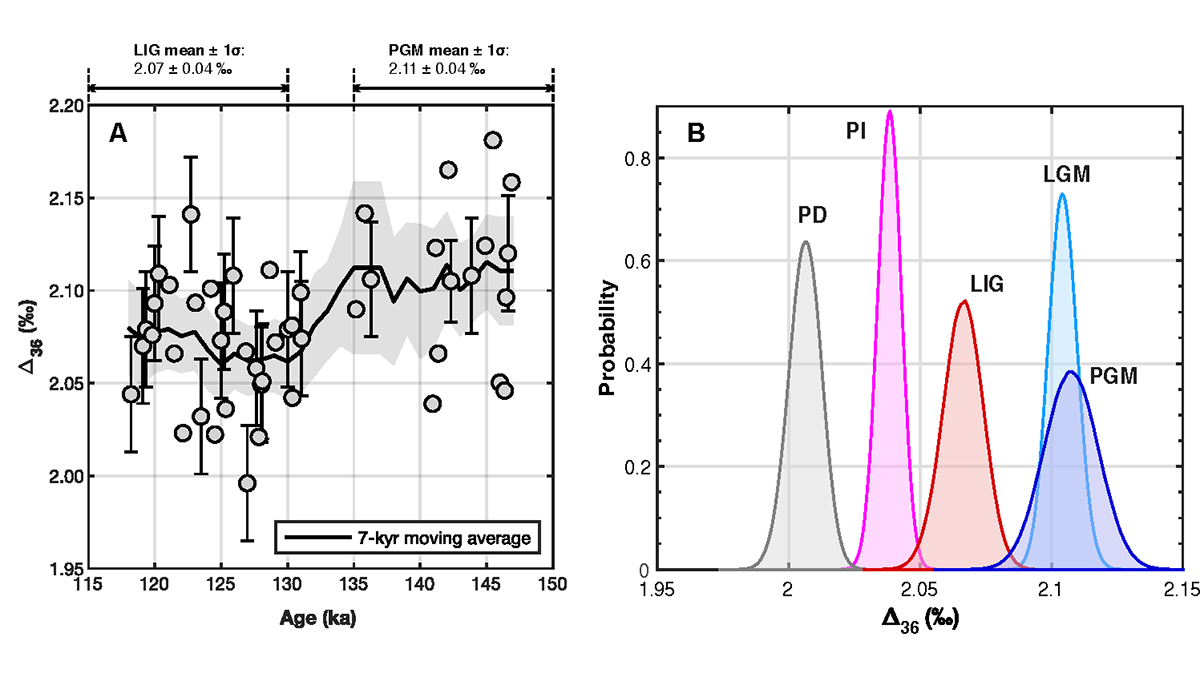From sediment cores to speleothems, environmental archives are helping us to understand the history of wildfires.
wildfires
Climate Change, Megafires Crush Forest Regeneration
High-intensity fires in western states kill mature trees and their seeds while warmer, drier conditions stress seedlings. But forest managers can still intervene to change this trajectory.
Wildfire Smoke Destroys Ozone
Smoke aerosols from large wildfires are the perfect reaction surface for chlorine chemicals, speeding their transformation from ozone-friendly forms to reactive ones.
Extreme Wildfires Make Their Own Weather
Extreme fires in the western United States and Southeast Asia influenced the local weather in ways that make fires and smoke pollution worse.
Summer Fire Means Winter Melt
Changing wildfire activity in California may impact seasonal hydrology by causing intense snowmelt during winter in areas where fires extend into higher elevation zones.
Potentially Good News for Solar Energy During Wildfires
A preliminary analysis suggests that the impact of smoke blocking the Sun during 2020’s megafires was minimal for the nation’s solar panels.
A Forest, for the Trees
Arrays of technologies and innovative research are helping scientists better understand forests, fires, and the future of our shared landscape.
Last Tree Standing
Refugia repopulate forests after fires, but climate change is making these woodlands increasingly unpredictable.
Clumped 18O –18O in Ice Reveals Past Ozone and Wildfire
Reactive gases like ozone are hard to preserve, but clumped isotopes and models provide clues to past ozone and suggest a global increase in wildfire at megafaunal extinction.
Managing Mudslide Debris After Fires
California officials faced a conundrum in dealing with mudslides after the Thomas Fire.










